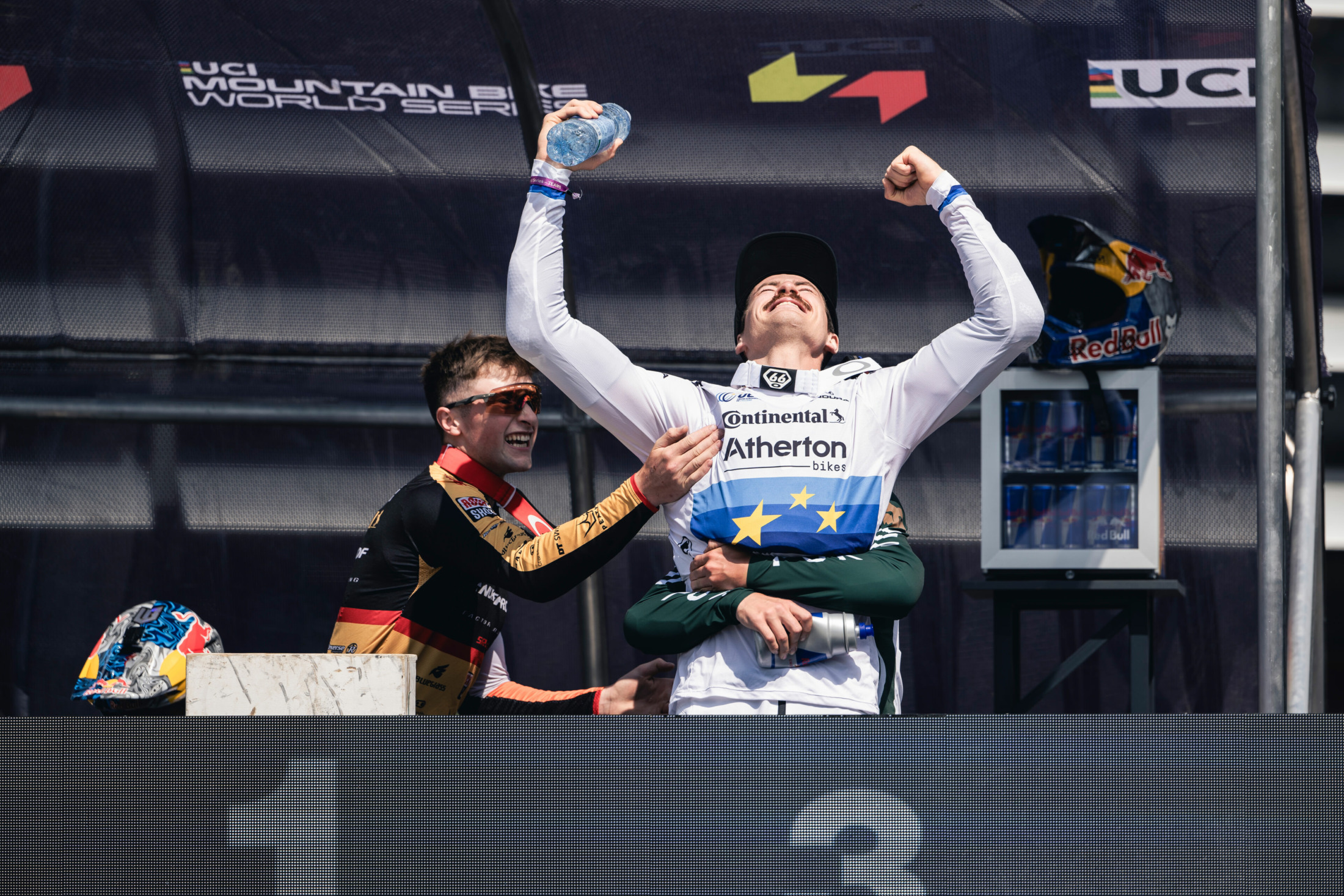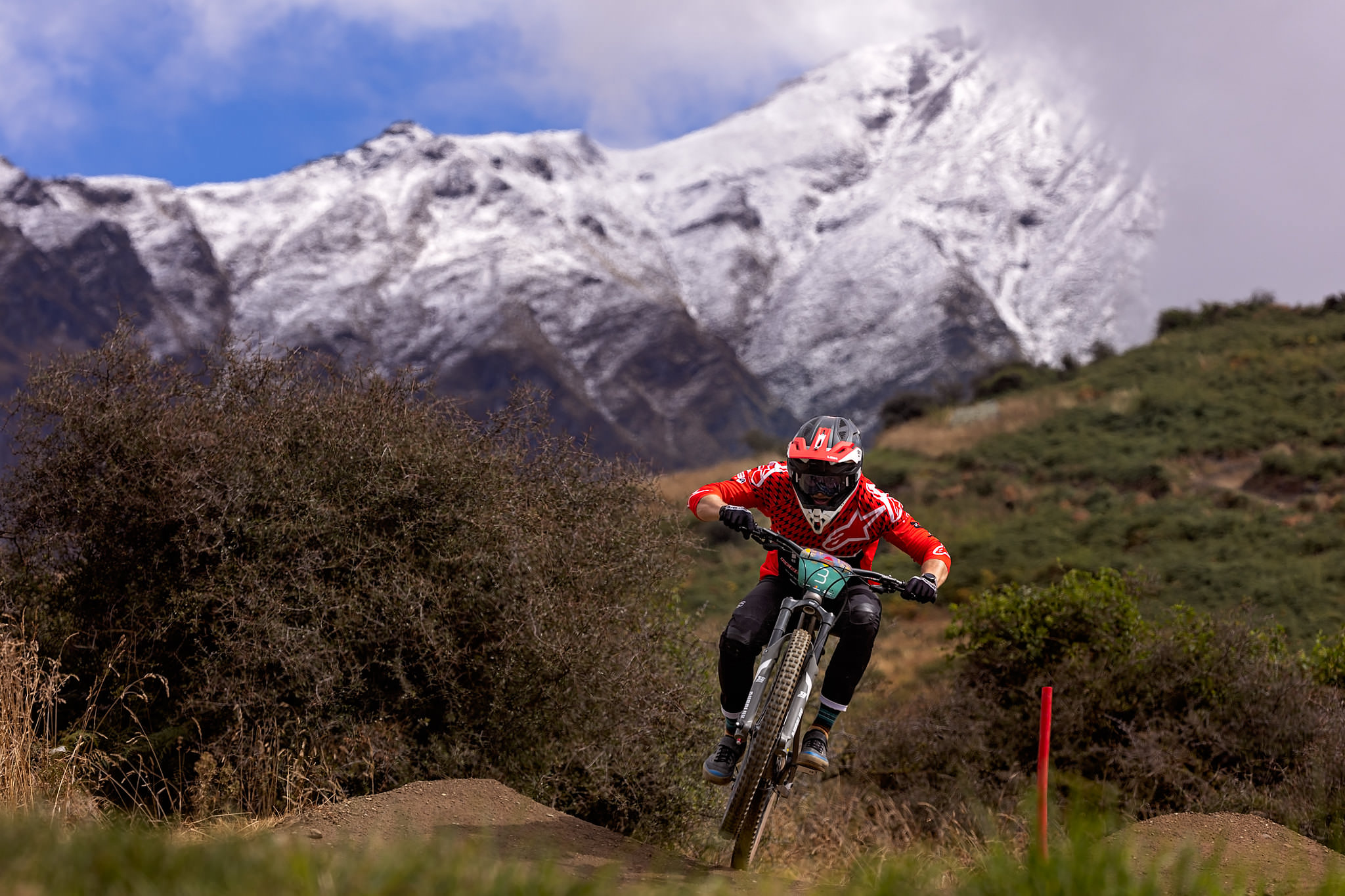The thrill of hitting a massive gap, the adrenaline rush from speed tucking through corners; it all hides the threat of rocks, roots and tree stumps, which aren’t in a rush to move out of the way when things get a little out-of-hand.
In the racing scene, you’ll be hard-pressed to find a rider who has not had a damaging crash at some point in their career. Playing a constant game with this risk feeds the love of riding and racing. But when the endorphins and adrenaline leave the system, injury is never a pleasant prospect to confront.
In the face of a growing sport where racing times are tighter than ever, and tracks are becoming shorter and more technically demanding, there is an even finer line between pulling together a fast run and leaving the track on a stretcher.

So, with all these thrilling tales of dramatic injuries and taxing comebacks circulating the World Cup scene, I went to find out more about how racers, as well as the UCI, manage to handle the considerable accident and recovery list at races.
Getting taken out of the game
Imagine months and months of off-season training, countless hours of lifting weights at the gym and doing intervals on the bike. Months and months have been focused on that first World Cup race at the start of the season. Each year, the expectation of better races and better results grows. So, when everything is flipped on its head, and medics are crowding around a rider, instead of celebrating teammates, you can see how it can work to dampen the mood a touch.
This is where the biggest question is asked: how do injured riders rekindle that motivation to start all over again?

Andreas Kolb, professional downhiller with Atherton Bikes won the 2023 World Cup in Leogang and is no stranger to rehabbing racing injuries. Kolb’s longest time off the bike was from a shoulder joint injury in 2017, where he couldn’t ride for three months. He says his recovery had constant ups and downs, swinging between an overflow of motivation to train and being bogged down with negative thoughts about mountain biking.
“You always go through (a time of) being depressed and angry and then being motivated again,” Kolb says. “But just trying to be positive is the biggest thing.”
As with most things, trying to remain ‘positive’ throughout your whole recovery is easier said than done. But there are multiple factors which will help push a rider’s mindset back into race mode.
Kye A’Hern, Australian downhill World Cup racer for NS Bikes underwent a shoulder reconstruction earlier this year and says that the thing that pushed him to work back to race fitness was watching all of his friends racing, having fun, and getting the results he was also aiming for.
View this post on Instagram
“Seeing racers and being back home is probably the most motivation you could ever have”, A’Hern says. “Seeing people you want to beat doing well and racing makes you think… ‘I should really be there doing that.’”
In any recovery, you go through an unpredictable period of stress and angst. Kolb tells Flow that it is the people around you who make the biggest difference.
Physiotherapists and personal trainers are always going to be integral parts of the journey back to doing what you love, but there is no point being physically fit for riding if you are not sufficiently rested and prepared for it mentally.
For Kolb, his team, Atherton Racing, provided the best possible support in his journey back to being a full-time professional downhill racer. When Kolb broke his elbow last year, he was told to take his time to get better and that he didn’t need to race before he was ready.

“If you have no pressure (to get back to racing), that’s definitely the biggest thing (during recovery)”, Kolb says. “If you feel like you need to race, it makes it a lot harder”.
Surrounding yourself with supportive and open-minded people who want the best for you can make putting in the hard yards a lot easier to bear. All that’s left is finding the courage to actually do it.
Into the Mind | Returning to riding and racing
When all the hard work has been put in all over again and the time is finally ripe to get back on two wheels, returning to the sport which caused all the injury and grief in the first place can be daunting.
The pressure of the increasingly tight racing standards of the World Cups and the inherently demanding nature of the tracks, paired with the fear of crashing and injuring yourself, is a lot to handle at once. It is not surprising that re-entering the racing scene throws a whirlwind of emotions at riders.

Kye A’Hern tells Flow that, mentally, it is much harder to come back from injury than physically; and he is right. Juggling the courage to speed down a mountain as fast as you can again, pushing away the distractions, the fear of crashing… all of that pressure to perform — you would half expect your head to burst at the start gate with all these thoughts bouncing around up there.
Finding that racing mindset after injury can be the most challenging part. But once these cobwebs have been cleared away, however, and you are back riding purely for the love of it, sometimes a break from the bike can do more good than bad.
Coming back from injury, Andreas Kolb walked away with his first podium result in Leogang last year, and Kye A’Hern with a 5th place at Crankworx Whistler this year.

Kolb says this time off the bike allowed room to rejig his perception of racing, making him a more calculated rider overall.
“Back in the day, I used to just risk my life in rock gardens because I wanted to be the fastest guy in it,” Kolb says. “But if you crash in a gnarly rock garden, it ends pretty badly.”
As harsh as it does seem, injury followed by recovery-time can help you approach racing with a much calmer mindset. No one likes being stuck on the couch with a broken bone, but if you come out of it a better rider, it might make the ups and downs easier to bear.
Safety first at the World Cups
When things go wrong at a World Cup, there are going to be questions as to why they happened and what can be done to prevent them from happening again. In the case of riders and injury, they can learn to focus on being fast and smooth on the bike, rather than being fast and out of control. But in the case of the organisers, it can kick-start essential changes in the way things are run.
Mountain biking is a dangerous sport, but there is always room in the background for changes to mitigate some of that risk.
View this post on Instagram
In the face of the growing sport, tracks are becoming shorter and faster for better TV coverage and spectator access. With this, the UCI have been pushing to provide better broadcasting platforms for fans, but it has taken a bit of nudging for the safety aspect of the World Cups to remain up to date.
One of these ‘nudges’ was Amaury Pierron’s crash at the beginning of the year at the Lenzerheide World Cup. Pierron fell sideways off his bike and landed on a stump in the B-zone, which is a section of trail next to the main World Cup racing track, which should be cleared prior to each race for the safety of riders.

This is meant to be a bit like a gravel trap on a motor racing track in that it’s intended to provide a buffer between the racer and the fans, and a soft (relatively speaking) landing pad for riders when they crash free from people, broadcast infrastructure and debris.
Despite some discomfort, Pierron decided to continue the race and head up for his qualification run later that afternoon. Feeling unable to ride the next day, however, Pierron went to the hospital, only to find that he had been racing with a fractured C5 vertebra.
As Pierron was injured by hitting a stump in the B-zone, or ‘safety zone’ he was naturally annoyed. He was more worried, however, about the fact that he was allowed to continue racing after such a big accident.

Instead of wallowing in the ‘ifs’ and ‘buts’ of his crash, Pierron used this time to consider what could be changed to avoid something like this happening again.
“Our sport is growing,” Ameury wrote in an Instagram post about the crash, “more money, more TV, more race runs, and faster tracks. But not more safety. And… no one in a capacity to forbid a rider to race. Because pain won’t stop a racer.”
Both Tahnee Seagrave and Myriam Nicole commented their support, adding the hashtag #takecareofyourriders.
Introducing medical personnel with the authority to remove a rider from the competition would definitely work well to lower the chance of furthering the severity of injuries. But this is not unique to downhill, or even mountain biking, as it’s something the UCI has been grappling with on the road for years, with cases of riders allowed to continue with broken bones and concussions.
Bring in the medics
The UCI are not turning a blind eye to these discussions. More and more medical personnel can be seen at races now, and the UCI have already introduced stricter protocols surrounding concussions, where eligible racers can be removed from the start list if necessary.

Just before the kick-off of the downhill World Cup in Andorra, the UCI released a document stating that any rider who has had an incident which could have resulted in a head injury or concussion, must refer to the medical tent for a concussion assessment by a medical professional. If the rider is seen to have a concussion by the medical department, it may mean that they will be removed from the race.
In reply to questions about the new protocol, the UCI responded that their aim is to increase the recognition and sensitivity of sport-related concussions. Assessments are now made on track, as quickly as possible, after initial first aid priorities are completed.
And the UCI has been active on this front since the policy was announced. Kalani Muirhead, a rider from New Zealand, had a crash in her qualification run in Les Gets. When she made it to the bottom of her run, she was instantly taken by a medic who checked over her helmet for any cracks, running through a list of health checks to ensure she was perfectly fine before allowing her to go.

Owing to the fact that mountain bike riders live by throwing themselves off cliffs and into piles of rocks — and in the case of World Cup racing, at high speed — ‘safety’ and ‘mountain biking’ don’t really mix. The UCI has a sizable task to bring these close together, and to its credit, is making strides in doing so. But there is always more work that can be done.
Mountain biking is always going to be a dangerous sport; it provides the thrill riders look for, but it will never cease to have its risks. Because of this, injury is not uncommon in the sport. These accidents and experiences with recovery can, however, provide valuable lessons for the riders and for the organisers, who are now making welcome changes.

Photos: Bartek Wolinski/ Red Bull Content Pool, Clint Trahan / Crankworx